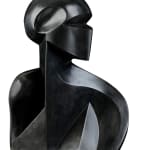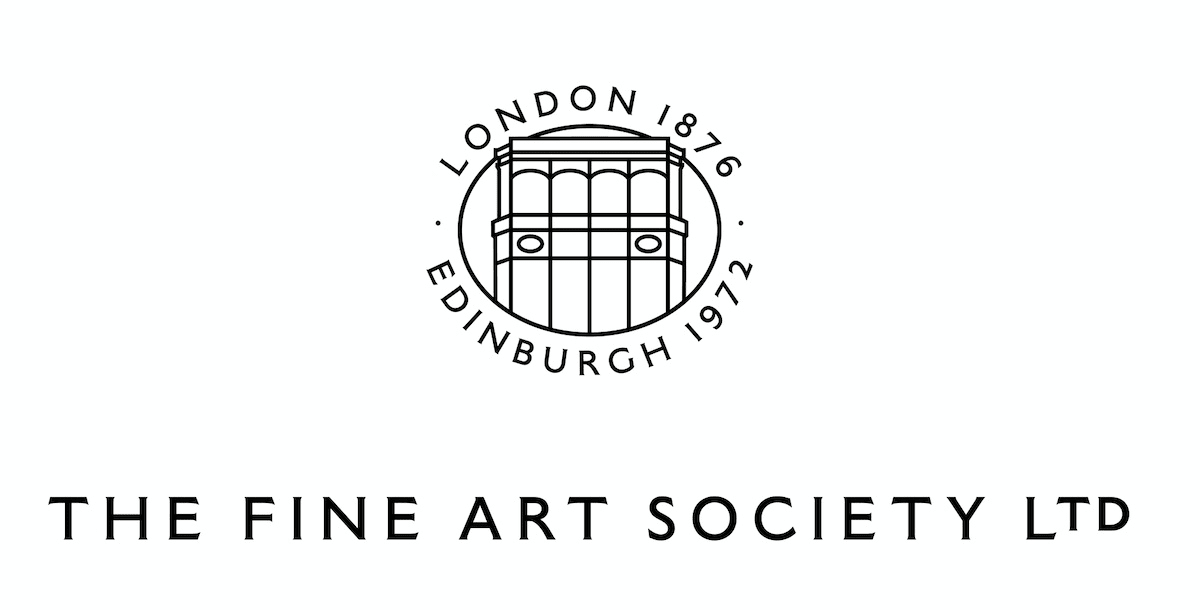



Gerald Laing 1936-2011
Galina I, 1973
AP1 from the edition of 10
bronze
created in Kinkell
created in Kinkell
18 ¾ x 14 x 10 ½ inches | 48 x 36 x 27 cm
Further images
'The image of Anna Karina prepared me for my meeting, in New York a couple of years later, with Galina who is the only one of my Great Muses (there...
"The image of Anna Karina prepared me for my meeting, in New York a couple of years later, with Galina who is the only one of my Great Muses (there have been minor ones as well) with whom I had a personal relationship (producing two splendid sons), with whom I worked in an objective and empirical manner, and indeed who cooperated with and contributed to creative decisions in the process. She possessed a body awareness and had a self-conscious and well- constructed presentation of her own physicality which gave her an iconic status, even under the constraints of the details of daily life. My entire sculptural output of the decade from 1973-83 was based on her.
'The Galina Series' (1973–1977) shows the route by which I returned from abstraction to the figure. The influence of the strict geometry of my abstract sculpture is evident in most of the work, and indeed is present even in my most recent and objectively arrived at images; for nothing is wasted, and we represent the sum of our experience.
'Galina I' is the very first step in this new direction, the moment when I abandoned fabrication and took up clay, thus allowing myself an infinite vocabulary of form. The other eight sculptures in the series were made during the next four years, variously at Kinkell, in Amagansett, Long Island, and in Albuquerque, New Mexico, where I spent a year at the University as Visiting Professor of Painting and Sculpture.
In 'Galina I', the breast is a perfect demi-pyramid; one shoulder is organic and tender; one is geometric. The true vertical line up the centre of the work which ends in a depressed oval which refers to the soft indentation of the temple, is at the same time a conscious homage to Picasso’s 'Femme-Fleur'. (Picasso’s sculpture was a big influence in the early part of the Galina series). The heads, however, beginning with 'Galina I', are derived from comic heroes such as the Silver Surfer (who rode the stratosphere looking down and murmuring to himself, ‘Alas what fools these mortals be’). And these comic images have, of course, roots in Japanese art and applied art, and probably run much deeper than that into the elemental human psyche." – G L
Galina Vassilovna Golikova, a strikingly beautiful Russian who he met in New York in the 1960s, was Gerald’s second wife. She was to become his most influential muse, and mother to two of his six children. In 1973 Laing embarked on the first piece in what was to be a long series of variations on the head and body of his wife Galina. These were unequivocally figurative and reminiscent of the mannerist forms of Modernism. His initial aim was the representation of the intricate arrangement of mass and voids that made up the body and space around it. The works in the series became increasingly naturalistic and, in 'An American Girl', retain only a few stylized hints of abstraction. As Laing’s work became progressively classical, he turned more to portraiture and public sculpture. He also learned from the Edinburgh-based master craftsman George Mancini, once of the historic Morris Singer Foundry, to cast bronze, and in 1978 set up his own bronze foundry at Kinkell. Later, in 1994, one of his sons, Farquhar, set up the Black Isle Bronze Foundry in nearby Nairn.
[from the exhibition catalogue of 'Gerald Laing - Myth & Muse: the cult of celebrity', The Fine Art Society, 2024]
'The Galina Series' (1973–1977) shows the route by which I returned from abstraction to the figure. The influence of the strict geometry of my abstract sculpture is evident in most of the work, and indeed is present even in my most recent and objectively arrived at images; for nothing is wasted, and we represent the sum of our experience.
'Galina I' is the very first step in this new direction, the moment when I abandoned fabrication and took up clay, thus allowing myself an infinite vocabulary of form. The other eight sculptures in the series were made during the next four years, variously at Kinkell, in Amagansett, Long Island, and in Albuquerque, New Mexico, where I spent a year at the University as Visiting Professor of Painting and Sculpture.
In 'Galina I', the breast is a perfect demi-pyramid; one shoulder is organic and tender; one is geometric. The true vertical line up the centre of the work which ends in a depressed oval which refers to the soft indentation of the temple, is at the same time a conscious homage to Picasso’s 'Femme-Fleur'. (Picasso’s sculpture was a big influence in the early part of the Galina series). The heads, however, beginning with 'Galina I', are derived from comic heroes such as the Silver Surfer (who rode the stratosphere looking down and murmuring to himself, ‘Alas what fools these mortals be’). And these comic images have, of course, roots in Japanese art and applied art, and probably run much deeper than that into the elemental human psyche." – G L
Galina Vassilovna Golikova, a strikingly beautiful Russian who he met in New York in the 1960s, was Gerald’s second wife. She was to become his most influential muse, and mother to two of his six children. In 1973 Laing embarked on the first piece in what was to be a long series of variations on the head and body of his wife Galina. These were unequivocally figurative and reminiscent of the mannerist forms of Modernism. His initial aim was the representation of the intricate arrangement of mass and voids that made up the body and space around it. The works in the series became increasingly naturalistic and, in 'An American Girl', retain only a few stylized hints of abstraction. As Laing’s work became progressively classical, he turned more to portraiture and public sculpture. He also learned from the Edinburgh-based master craftsman George Mancini, once of the historic Morris Singer Foundry, to cast bronze, and in 1978 set up his own bronze foundry at Kinkell. Later, in 1994, one of his sons, Farquhar, set up the Black Isle Bronze Foundry in nearby Nairn.
[from the exhibition catalogue of 'Gerald Laing - Myth & Muse: the cult of celebrity', The Fine Art Society, 2024]
Provenance
The artist's estate, catalogue raisonné no. 310 (Artist's CR 290)Exhibitions
Max Hutchinson Gallery, New York, 1976;
Zolla Lieberman Gallery, Chicago, 1976;
The Fruitmarket Gallery, Gerald Laing: A Retrospective 1963–1993, Edinburgh, 1993;
Inverness Museum and Art Gallery, Gerald Laing: The Galina Series, Inverness, 1994;
The Fine Art Society, Gerald Laing: Sculpture 1968–1999, London, 1999;
Chisenbury Priory, Gerald Laing: Sculpture at Chisenbury Priory, East Chisenbury, 2002
Literature
L.M. Scobie, Exhibition catalogue (Cleish Castle, 1975);W. Peterson, Gerald Laing (Artspace, 1976-7);
Gerald Laing: A Retrospective 1963-1993 (The Fruitmarket Gallery, 1993);
Gerald Laing: Sculpture at Chisenbury Priory, exhibition catalogue, 2002;
Gerald Laing: from 1963 to the Present (Bourne Fine Art, 2004);
Gerald Laing: Sculpture 1865-1978 (The Fine Art Society, 2008);
Gerald Laing, Gerald Laing: an Autobiography (unpublished manuscript, 2011); Gerald Laing 1936-2011: A Retrospective (The Fine Art Society, 2016)
Join our mailing list
* denotes required fields
We will process the personal data you have supplied to communicate with you in accordance with our Privacy Policy. You can unsubscribe or change your preferences at any time by clicking the link in our emails.




